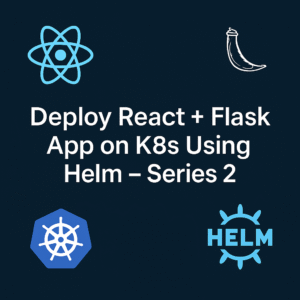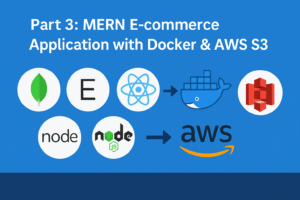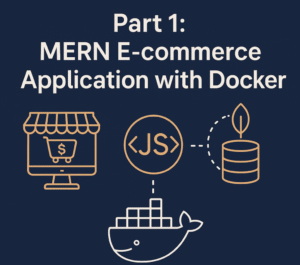How to Optimize Docker Files for react js deployment
Introduction
When it comes to deploying a ReactJS application, using Docker is a highly efficient and scalable approach. In this blog, we’ll explore four different Dockerfile configurations, each optimized for specific use cases, and discuss the best practices for containerizing a ReactJS frontend.
Why Use Docker for ReactJS Deployment?
Docker simplifies the deployment of frontend applications by:
- Providing a consistent runtime environment.
- Enabling faster builds with caching.
- Supporting lightweight and secure images.
Prerequisites
Before we dive into the Dockerfiles, ensure you have:
- A ReactJS application ready for deployment.
- Docker installed on your machine.
- Basic knowledge of Dockerfile syntax.
1. Basic Production Build
This is a straightforward approach to containerizing a ReactJS frontend. It uses a multi-stage build to separate the build process from the final runtime environment.
# Use an official Node.js runtime as the builder stage
FROM node:18 AS builder
# Set the working directory
WORKDIR /app
# Copy package.json and package-lock.json for dependency installation
COPY package*.json ./
# Install dependencies
RUN npm install
# Copy the application source code
COPY . .
# Build the React app for production
RUN npm run build
# Use an official NGINX image to serve the build files
FROM nginx:stable-alpine
# Copy the React build output to NGINX's web root directory
COPY --from=builder /app/build /usr/share/nginx/html
# Expose port 80
EXPOSE 80
# Start NGINX server
CMD ["nginx", "-g", "daemon off;"]
Advantages:
- Clear separation of build and runtime stages.
- Keeps the final image size minimal.
2. Multi-Stage Build with Cache Optimization
This approach optimizes layer caching, reducing rebuild times by separating dependency installation from the application source code.
# Use an official Node.js runtime as the builder stage
FROM node:18 AS builder
# Set the working directory
WORKDIR /app
# Copy package.json and package-lock.json separately for layer caching
COPY package*.json ./
# Install dependencies with a production flag
RUN npm ci
# Copy the application source code
COPY . .
# Build the React app for production
RUN npm run build
# Use an official NGINX image to serve the build files
FROM nginx:stable-alpine
# Copy custom NGINX configuration
COPY nginx.conf /etc/nginx/conf.d/default.conf
# Copy the React build output to NGINX's web root directory
COPY --from=builder /app/build /usr/share/nginx/html
# Expose port 80
EXPOSE 80
# Start NGINX server
CMD ["nginx", "-g", "daemon off;"]
Enhancements:
3. Lightweight with Alpine Image
For production environments, using lightweight images is crucial. This Dockerfile uses Alpine-based images to minimize the final image size.
# Use a lightweight Node.js image as the builder
FROM node:18-alpine AS builder
# Set the working directory
WORKDIR /app
# Copy package.json and install dependencies
COPY package*.json ./
RUN npm install --frozen-lockfile
# Copy the application source code
COPY . .
# Build the React app
RUN npm run build
# Use a lightweight NGINX image to serve the build files
FROM nginx:1.23-alpine
# Copy the React build output to NGINX's web root directory
COPY --from=builder /app/build /usr/share/nginx/html
# Expose port 80
EXPOSE 80
# Start NGINX server
CMD ["nginx", "-g", "daemon off;"]
Why Alpine?
- Smaller base image size.
- Reduced attack surface for security.
4. Customizable Build Arguments
This Dockerfile provides flexibility by introducing build arguments for Node.js and NGINX versions.
# Define build arguments for flexibility
ARG NODE_VERSION=18
ARG NGINX_VERSION=stable-alpine
# Use the specified Node.js runtime
FROM node:${NODE_VERSION} AS builder
# Set the working directory
WORKDIR /app
# Copy dependencies for caching
COPY package*.json ./
# Install dependencies
RUN npm install
# Copy the source code
COPY . .
# Build the React app
RUN npm run build
# Use the specified NGINX version
FROM nginx:${NGINX_VERSION}
# Copy the React build output
COPY --from=builder /app/build /usr/share/nginx/html
# Expose port 80
EXPOSE 80
# Start NGINX server
CMD ["nginx", "-g", "daemon off;"]
Benefits:
- Build arguments allow easy customization.
- Suitable for projects requiring specific runtime versions.
Key Takeaways
- Multi-Stage Builds: Essential for separating build and runtime environments to reduce the final image size.
- Layer Caching: Speeds up rebuilds and saves time during development.
- Alpine Images: Perfect for lightweight production-ready containers.
- Customizability: Build arguments add flexibility for specific requirements.
Testing the Docker Images
Run the following commands to build and test any of the Dockerfiles:
# Build the Docker image
docker build -t react-frontend .
# Run the container
docker run -p 8080:80 react-frontend
Conclusion
Containerizing a ReactJS application with Docker not only simplifies deployment but also enhances scalability and portability. By following the best practices outlined in these Dockerfiles, you can ensure your frontend application is production-ready, efficient, and secure.




